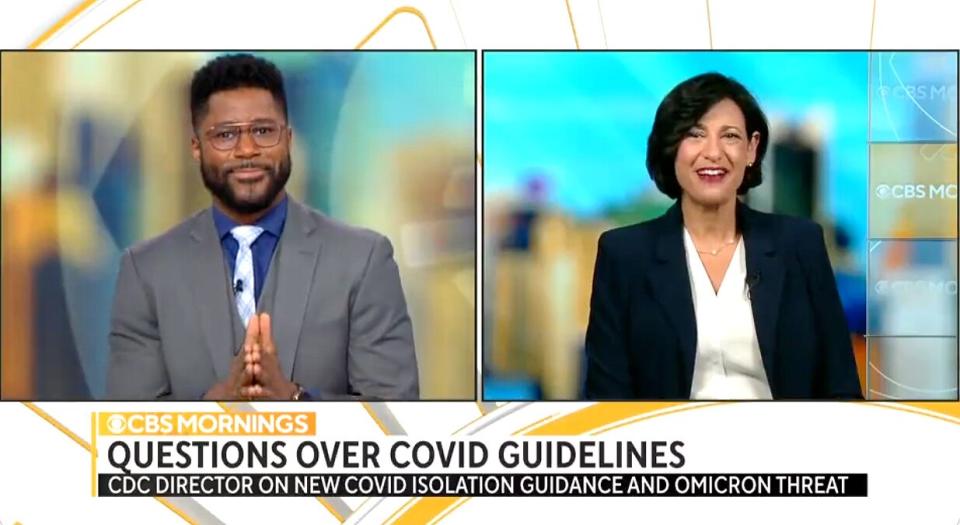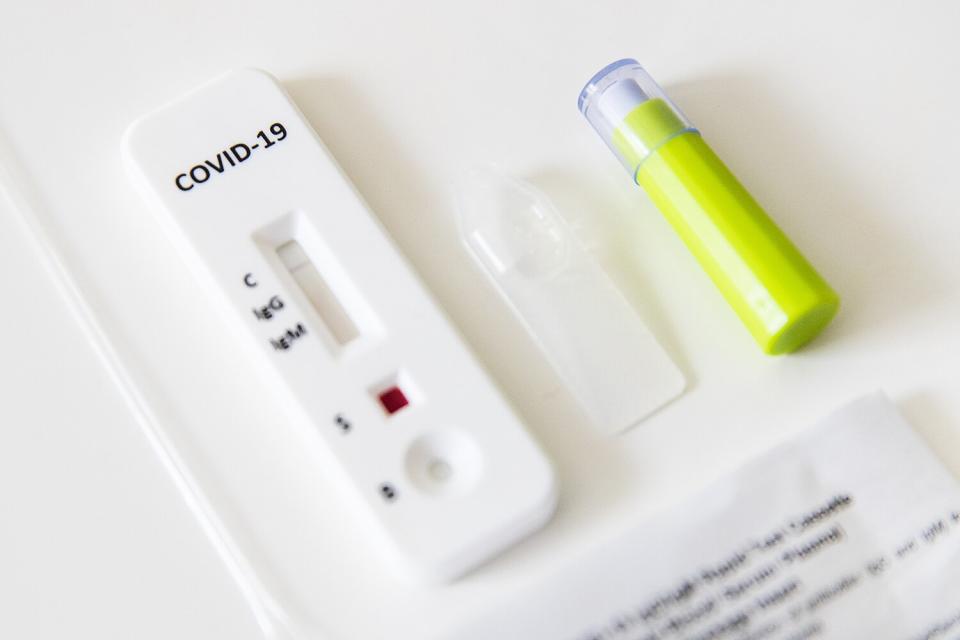CDC Director Says COVID Isolation Rules Were Changed to 'Encourage People to Do the Right Thing'
- Oops!Something went wrong.Please try again later.
- Oops!Something went wrong.Please try again later.
The Centers for Disease Control and Prevention is explaining the reasoning behind the new COVID-19 isolation guidelines.
On Wednesday, CDC Director Rochelle Walensky appeared on both CBS Mornings and CNN's New Day, sharing that health officials hope the guideline change will make it easier for people to willingly isolate themselves.
"We really do need people to follow these recommendations for them to work. But I would also say that those people who are not masking, who are out and about are probably not the ones isolating either," she noted. "So what we really wanted to do is make sure that these recommendations were more easily followed. We don't want them out and about when they are maximally infectious."

Under the new guidelines, quarantine periods have been reduced from 10 days to five for those who have been in close contact with someone that has tested positive for COVID-19, and those that test positive but remain asymptomatic. Afterward, individuals are asked to wear a mask around others for the next five days.
RELATED: CDC Shortens Recommended Isolation Period for Asymptomatic COVID Cases
"What we do know is that about 85-90% of viral transmission happens in those first five days, which is why we really want people to stay home during that period of time and then mask for the rest of the time to capture that last 10 to 15%," Walensky told host Nate Burleson on CBS Mornings.
"We also know that we're expecting a large number of cases, we've seen that in other countries, and many of those cases may be asymptomatic or mildly symptomatic," she continued. "So, we want to be able to get people back out if they're feeling well, but to also have them be masked."
Never miss a story — sign up for PEOPLE's free daily newsletter to stay up-to-date on the best of what PEOPLE has to offer, from juicy celebrity news to compelling human interest stories.
Regarding why a negative test is not required after completing five days of isolation, Walensky said it simply isn't necessary. "We don't know how this antigen performs with regard to predicting transmissibility towards the end of your period of infection," she explained. "We know it performs really well during that period where you're initially infected, but the FDA has not at all looked at whether or not … your positive antigen really does correlate with whether or not you're transmissible or not."
"So with a negative antigen test, we'd still ask you to wear a mask. With a positive antigen test, we'd still say you could wear a mask. And since it wasn't going to make a difference in our recommendations, we did not recommend an antigen [test] at that period of time."

Adam Glanzman/Bloomberg via Getty
RELATED: United States Sets New Record for Positive COVID-19 Infections amid Omicron Surge
Walensky offered similar sentiments about the negative rapid test during her appearance on CNN's New Day, noting that the CDC does want individuals to get tested during the first five days of exposure.
Earlier in the interview, the CDC director told Collins that the guidelines were tooled based on what the CDC believed "people would be able to tolerate."
"We have seen relatively low rates of isolations for all of this pandemic," Walensky said, noting that "some science" has shown that less than 1/3 of people have been properly isolating. "And so we really want to make sure that we had guidance in this moment when we were going to have a lot of disease that could be adhered to, that people were willing to adhere to and that speaks specifically to when people are maximally infectious."
“It really had a lot to do with what we thought people would be able to tolerate,” CDC Director Walensky says on why the CDC shortened the isolation period from 10 days to 5 days if you’re asymptomatic. Our full interview: pic.twitter.com/rO7blPFiPj
— Kaitlan Collins (@kaitlancollins) December 29, 2021
When asked why the guidance wasn't changed sooner, Walensky indicated that the rise in cases would have a significant impact on the workforce.
"In the context that we were going to have so many more cases, many of those would be asymptomatic or mildly symptomatic. People would feel well enough to be at work. They would not necessarily tolerate being home and that they may not comply with being home," she told Collins.
RELATED: Healthy People with Booster Shots Not Likely to Get Severe Infections from Omicron, Data Show
Walensky told both CBS and CNN that the new guidelines "had nothing to do" with the supply of rapid COVID-19 tests. "It had everything to do with knowing what we would do with the information when we got it," the CDC director told Burleson.
As Collins noted, however, accessibility remains an issue for many people across the country, both in terms of supply and affordability. Walensky told the New Day host that the government "is doing a lot to make sure that they are affordable and accessible" to the public as COVID-19 cases soar.
"The government is doing a lot and we have the need to do more, and I think that was articulated this week," she said.

